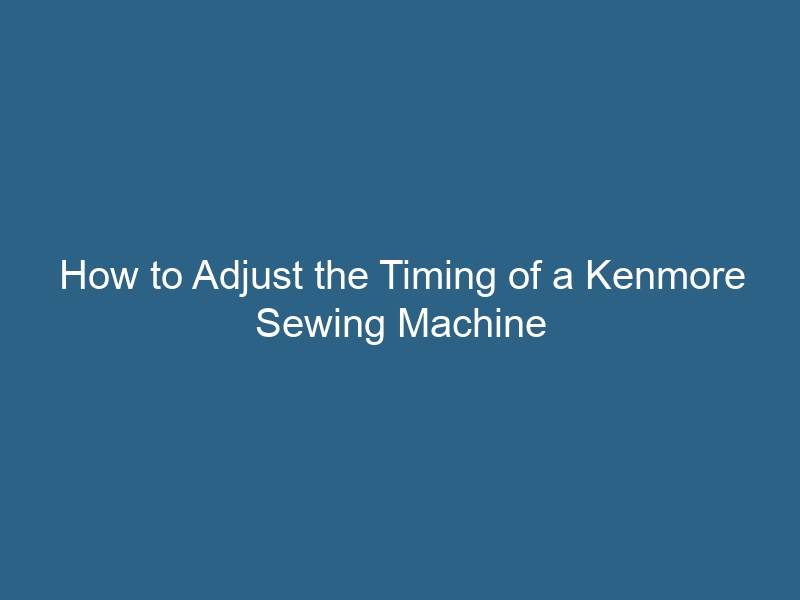Quck answer
To fix the timing of a Kenmore sewing machine, follow these steps:
1. Remove the needle plate and bobbin case to access the machine’s inner workings.
2. Locate the timing marks on the machine, usually indicated by arrows or lines.
3. Rotate the handwheel towards you until the needle is at its lowest point and the timing marks align.
4. Adjust the needle bar and hook assembly if the timing is off. Loosen the screws, align the marks, and retighten the screws.
5. Replace the bobbin case and needle plate, ensuring they are properly seated.
6. Test the machine by sewing on scrap fabric to ensure the timing is corrected.
Remember to consult your Kenmore sewing machine’s manual for specific instructions and diagrams.
Repairing the timing on a Kenmore sewing machine is not as complicated as it may seem. Occasionally, the sewing machine’s timing needs to be adjusted due to regular use. If you notice that the stitches are slightly off or the machine is not stitching properly even after cleaning, re-threading, and adjusting the tension, then timing may be the issue.
Step 1
Begin by removing the plate that covers the bobbin. You can use the screwdriver provided with the Kenmore sewing machine to make this task easier.
Step 2
Examine the point where the needle and the bobbin casing meet. Slowly turn the hand wheel by hand and observe whether the bobbin casing passes before the needle comes down or vice versa.
Step 3
Clear the area around the needle. Set the stitch length to four and raise the needle to its highest position so that you can access the area underneath it. Either raise the presser foot or remove it to have a clear view of the feed dogs.
Step 4
Loosen the single screw in the specific location on the Kenmore sewing machine using a regular flat-head screwdriver. Typically, this screw is the upper one.
Step 5
Rotate the eccentric pin slightly using an Allen wrench. The eccentric pin is located just below the screw that you loosened with a flat-head screwdriver. Turn the eccentric pin slightly in one direction to adjust the height of the feed dogs. If the feed dogs move downward, adjust the eccentric pin in the opposite direction.
Step 6
Check the height of the feed dogs. When you turn the hand wheel, the feed dogs should rise by 0.04 inches or 1.016mm on the Kenmore sewing machine. This height is sufficient for the feed dogs to move the fabric while sewing. If the feed dogs are still not at the correct height to fix the timing, turn the eccentric pin a little bit more.
Step 7
Restore your sewing machine to its original state. Tighten all the screws and replace the plate covering the bobbin.
Step 8
Test your sewing machine. Set the stitch length to “2.” Insert a piece of scrap fabric and slowly turn the hand wheel to ensure that the needle does not hit the bobbin casing. Further test the timing by stepping on the pedal and allowing the sewing machine to operate at a faster speed, with the feed dogs moving the fabric through to form the stitches correctly.


